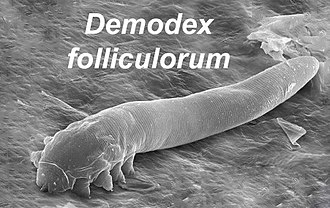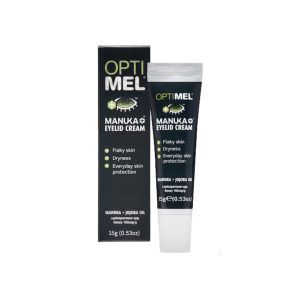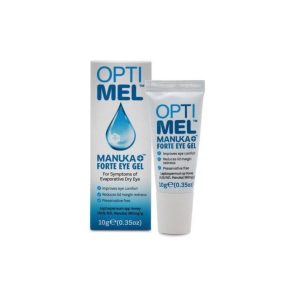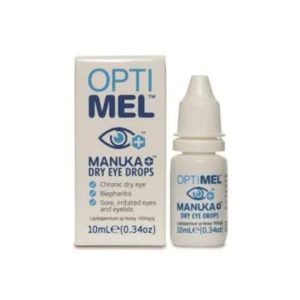Are you facing ongoing problems with eye dryness, irritation, or discomfort that persist without resolution?
You could be one of the numerous individuals dealing with a chronic dry eye condition that may be connected to Demodex mites. These minuscule, eight-legged creatures commonly reside on human skin, notably around delicate areas like the eyes and eyelids. When their numbers surge beyond typical levels, it can cause significant inflammation, exacerbating dry eye symptoms and severely impacting your overall comfort and quality of life.
If you’ve been struggling with unexplainable persistent dry eye symptoms, it’s essential to consider whether Demodex mites could be a contributing factor to your distress.
This comprehensive guide aims to assist you in recognizing the signs of a Demodex infestation, clarify how these mites are linked to dry eye disease, and explore effective treatment options to help control their population and alleviate your symptoms.

Recognizing the Symptoms of Demodex Blepharitis for Timely Action
Individuals suffering from Demodex Blepharitis, characterized by a heightened presence of these mites around their eyes, frequently report a variety of distressing symptoms. The most prevalent indicators include:
- Burning, stinging, or gritty sensations in the eyes, especially noticeable toward the end of the day.
- Unexplained excessive tearing or watery eyes that occur without any allergy triggers.
- Red, inflamed eyelids accompanied by irritation of the skin surrounding the eyes.
- Crusty, dandruff-like buildup along the lashes and lid margins, often appearing as collarettes.
- Extreme sensitivity to light, creating the sensation that your eyes are perpetually squinting.
- Episodes of blurred vision that can fluctuate throughout the day.
Many individuals endure these dry eye symptoms for extended durations, unaware that an infestation of Demodex mites could be a significant underlying factor contributing to their discomfort and irritation.

Understanding How Demodex Mites Contribute to Dry Eye Symptoms
Are you intrigued by how these microscopic organisms can lead to troublesome dry eye symptoms? Demodex mites thrive on the natural oils and cellular debris found on human skin, particularly taking residence in the hair follicles of your eyelashes. As they feed, their waste products, eggs, and dead mites accumulate along the lid margins, creating a thick layer of debris and bacterial biofilm. This accumulation obstructs the delicate oil glands vital for maintaining optimal eye health.
When these oil glands fail to release the essential oils needed to sustain the tear film of the eye, dry patches can develop rapidly. This oily tear film is crucial for preventing the swift evaporation of watery tears that keep our eyes moist, comfortable, and healthy.
As a result, this inflammation can intensify eye irritation, redness, and the persistent gritty sensation that often accompanies dry eye syndrome.
Leveraging Knowledge of Demodex Mite Life Cycle for Effective Treatment
Understanding the life cycle of Demodex mites is essential for creating effective treatment strategies. These mites undergo distinct stages: egg, larva, nymph, and adult, with a life cycle typically lasting 14 to 21 days. They exhibit increased activity during the night, leaving their hair follicles to mate and lay new eggs on the skin’s surface.
This nocturnal behavior indicates that the best time to apply Demodex treatments is in the evening, just before bedtime. By targeting the mites during their peak activity hours, it becomes significantly easier to eradicate them. However, owing to their rapid reproductive capabilities, any remaining mites can quickly repopulate, necessitating continuous treatment for several weeks or even months to achieve lasting results.
Adopting Effective Treatment Strategies for Relief from Demodex-Related Dry Eye
If your optometrist identifies a high count of Demodex mites through eyelash sampling or microscopic examination, they may recommend various treatment options to combat the infestation effectively:
1. Harnessing Tea Tree Oil Eyelid Wipes and Scrubs for Targeted Relief
Products containing tea tree oil are renowned for their potent antimicrobial and antiparasitic properties, making them effective in eradicating mites. These treatments can target surface mites, dismantle collarettes formed by these pests, and expose hidden mites, rendering them more vulnerable to eradication.
While tea tree oil is a powerful solution against mites, it may cause stinging upon application and has the potential to be cytotoxic to healthy cells, which could exacerbate symptoms for some users.
Consistent use of tea tree oil eyelid wipes or scrubs before bedtime can gradually diminish the mite population over time. One particularly effective tea tree oil treatment is OcuSoft Oust Foam, which is especially beneficial for managing blepharitis primarily attributed to Demodex mites.
2. Utilizing Gentle Hypochlorous Acid Lid Hygiene Sprays for Soothing Relief
Hypochlorous acid is a natural substance produced by our immune system, acting as an effective antimicrobial agent. It is gentle on the eyes, free from stinging, and safe for our cells.
Disinfecting lid sprays and cleansing foams containing hypochlorous acid not only eliminate mites but also reduce inflammation, providing relief from uncomfortable symptoms.
Applying these solutions to the lash lines before bed can effectively eradicate mites and their debris. These products often have a distinct scent reminiscent of chlorinated pool water. Examples of hypochlorous acid-based products include Ocusoft Hypochlor Spray and Avenova.
We frequently recommend Ocusoft Hypochlor Foam due to its exceptional value and extended shelf life after opening.
3. Exploring the Therapeutic Benefits of Manuka Honey for Eye Care
Research indicates that Manuka Honey solutions can be nearly as effective as 50% tea tree oil against Demodex, although more studies are needed in this area. While it may cause a slight sting upon application, Manuka Honey tends to be less potent than tea tree oil specifically against Demodex, yet it demonstrates remarkable efficacy against other forms of blepharitis. It is non-cytotoxic and less likely to provoke inflammation in the eyelids.
Many patients report that the initial sting is a minor inconvenience compared to the substantial relief they often experience afterward. Manuka Honey solutions are available in gel form (such as Optimel Forte, which is more effective but may sting more) and as drops (like Optimel Drops, which are easier to apply and sting less).
4. Addressing Severe Demodex Infestations with Prescription Anti-Parasitic Medications
In instances where Demodex overpopulation is severe and continues to persist, healthcare providers may prescribe oral antiparasitic medications. Drugs like Ivermectin in pill form have proven effective in managing these infestations, along with weekly doses of oral tea tree oil supplements taken over several months to help control mite levels.
5. Discovering Advanced Professional Treatments for Comprehensive Demodex Management
Some specialized eye clinics offer intensive in-office treatments specifically designed for Demodex management. These treatments employ products such as Oust Demodex Cleanser Swabstix or a specialized handheld electric brush known as BlephEx.
The Oust Demodex Cleanser Swabstix is particularly effective in targeting and eliminating Demodex mites from the eyelid and lash areas, ensuring that your eyes feel refreshed and free from irritation.
The Article: Demodex Mites Linked to Chronic Dry Eye Issues first appeared on https://writebuff.com.
References:
Demodex Mites Linked to Chronic Dry Eye Issues







It’s fascinating how often overlooked factors like Demodex mites can play a significant role in chronic conditions such as dry eye disease. Personally, I experienced persistent irritation and discomfort for years without pinpointing the cause. After exploring various treatments and consulting with multiple specialists, addressing potential mite infestations became a game changer for me.
I really appreciate you sharing your experience. It’s wild how often tiny things like Demodex mites get brushed aside when we think about eye health. Your journey highlights the struggle so many face with chronic irritation. It’s interesting how conventional treatments might miss the role of these little critters. Have you found any specific methods for managing them that you’d recommend? It seems like many people might not even think to look in that direction when dealing with dry eyes.
It’s wild, isn’t it? Who would’ve thought that these tiny creatures, comfortably nestled in our follicles, would be the culprits behind such persistent irritation? I mean, they probably think they’re just having a cozy time, while we’re left feeling like we walked into a wind tunnel with sand in our eyes. It’s amazing how these little guys can go unnoticed until they decide to throw a party that’s more irritating than a bad sitcom rerun.
You’ve nailed it! It is wild how these barely visible little creatures can stir up such chaos. I often wonder how they manage to go undetected for so long, almost like they’re the hidden villains in a low-budget horror movie. They’re just chilling in our hair follicles, having what they think is a great time, while we’re stuck grappling with irritation and discomfort that feels way out of proportion to their actual size. It’s almost comical, if it weren’t so annoying.
It really is wild how these microscopic creatures can have such a big impact on our everyday lives. It’s almost like a strange twist in nature—while we’re going about our business, they’re just living it up in our hair follicles. I think it highlights how much is going on around us that we can’t see, often leading to some very unexpected problems.
It’s interesting to hear about your experience with Demodex mites. Many people don’t realize how these tiny creatures can have such a substantial impact on eye health. The common assumption is that dry eye disease is solely due to environmental factors, aging, or even staring at screens too long. Yet, the role of the microbiome, including the presence of mites, often gets overshadowed in discussions about chronic irritation.